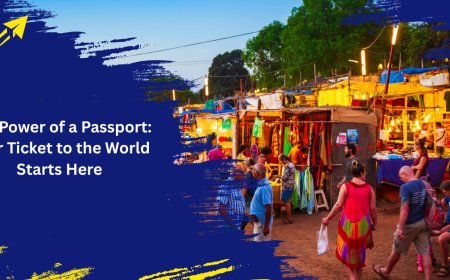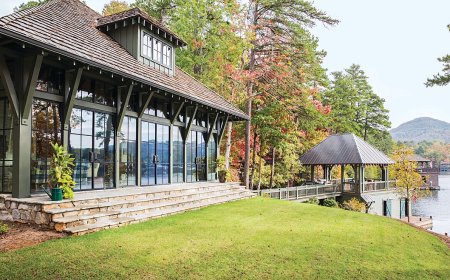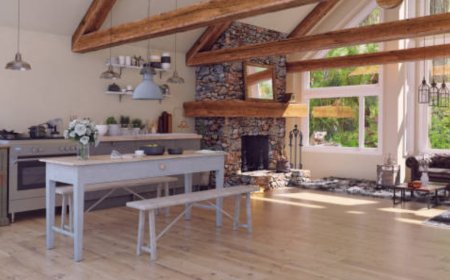How to Visit Lourdes Evening Torchlight
How to Visit Lourdes Evening Torchlight The Evening Torchlight Procession in Lourdes is one of the most spiritually moving and visually breathtaking experiences in the Catholic world. Held nightly during the pilgrimage season, this solemn yet radiant ceremony unites thousands of pilgrims under the stars, carrying lit candles as they sing hymns in honor of the Virgin Mary. For many, it is the emoti
How to Visit Lourdes Evening Torchlight
The Evening Torchlight Procession in Lourdes is one of the most spiritually moving and visually breathtaking experiences in the Catholic world. Held nightly during the pilgrimage season, this solemn yet radiant ceremony unites thousands of pilgrims under the stars, carrying lit candles as they sing hymns in honor of the Virgin Mary. For many, it is the emotional and spiritual climax of their journey to the Grotto of Massabielle. Whether you are a devout pilgrim, a curious traveler, or someone seeking peace through sacred ritual, understanding how to visit Lourdes Evening Torchlight is essential to fully embrace its meaning and logistics. This guide provides a comprehensive, step-by-step walkthrough—grounded in practical experience and cultural insight—to help you navigate this profound tradition with confidence, reverence, and ease.
Step-by-Step Guide
Visiting the Evening Torchlight Procession in Lourdes is not merely about showing up—it is about preparing, timing, and participating with intention. Below is a detailed, day-by-day breakdown of how to ensure your experience is seamless, respectful, and deeply meaningful.
Plan Your Visit During the Pilgrimage Season
The Evening Torchlight Procession occurs nightly from late March through early November, with the most vibrant participation between May and September. Outside of this window, the ceremony may be scaled back or canceled due to weather or lower attendance. Always verify the official schedule on the Sanctuaire de Lourdes website before finalizing travel plans. The procession typically begins at 9:00 PM during summer months, though start times may shift slightly in spring and autumn—always confirm locally upon arrival.
Booking accommodations well in advance is critical. Lourdes fills rapidly during peak season, and hotels, guesthouses, and hostels near the sanctuary are often reserved months ahead. Consider staying in the town center or within walking distance of the Upper Basilica for optimal access. Many pilgrims opt for religious hostels run by diocesan organizations, which offer affordable lodging and a community atmosphere.
Arrive Early to Secure a Good Position
While the Torchlight Procession is open to all, the most powerful viewing and participation spots are near the Grotto and along the esplanade in front of the Basilica of the Immaculate Conception. To secure a place in the front rows, arrive at least 60 to 90 minutes before the procession begins. Pilgrims begin gathering as early as 7:30 PM, forming a human chain that stretches from the Rosary Basilica to the Grotto.
Bring a small folding stool or cushion if you plan to stand for long periods. The ground is uneven in places, and the evening air can be cool, even in summer. Dress in layers. Comfortable, closed-toe shoes are essential—cobblestone paths and crowded walkways make sandals impractical.
Understand the Structure of the Ceremony
The Torchlight Procession follows a traditional format that has remained largely unchanged for over a century. It begins with a brief liturgical prayer led by a priest or deacon, followed by the singing of the “Ave Maria” in multiple languages. Pilgrims then light their candles—either brought from home or purchased on-site—and form a slow-moving procession around the Grotto, often encircling the entire sanctuary area.
The procession moves at a meditative pace, accompanied by the soft glow of thousands of candles and the haunting harmonies of Gregorian chants. At the conclusion, the crowd sings the “Salve Regina,” and the candles are extinguished in unison, leaving only the illuminated statues and fountains visible under the night sky. The entire ceremony lasts approximately 60 to 75 minutes.
There is no formal seating during the procession. Participants stand, kneel, or sit on the ground as they feel moved. Many choose to pray silently, hold rosaries, or simply absorb the atmosphere. Children are welcome, but parents should prepare them for the length and quietude of the event.
Obtain a Candle—Where and How
Candles are available for purchase at multiple stalls located around the sanctuary grounds, particularly near the entrance to the Grotto and at the base of the Upper Basilica. Prices are modest—typically between €1 and €2 per candle—and proceeds support the upkeep of the sanctuary. Some pilgrims bring their own candles from home, especially if they have been blessed elsewhere.
Ensure your candle is securely placed in a metal holder or glass vial to prevent wax drips and reduce fire risk. Do not carry loose candles in pockets or bags. Many vendors also sell small lanterns designed for outdoor use, which are ideal for windy conditions. If you are traveling with a group, consider purchasing a candle with a longer burn time to ensure it lasts through the entire procession.
Participate Respectfully and Mindfully
The Torchlight Procession is not a tourist spectacle—it is a prayerful act of devotion. While photography is permitted, avoid using flash, loud conversations, or phone screens during the ceremony. Silence your devices completely. If you wish to record video, do so discreetly and only from the periphery, never blocking others’ views.
Join in the singing if you are familiar with the hymns. If not, it is perfectly acceptable to listen quietly. Many pilgrims find that simply being present—breathing, feeling the warmth of the candles, hearing the voices around them—is enough. There is no pressure to perform or to speak. This is a space for stillness.
Post-Procession: Reflection and Quiet
After the candles are extinguished, the crowd disperses slowly and respectfully. Many pilgrims remain near the Grotto for personal prayer, often continuing into the late night. The area remains open 24 hours, and the water from the spring continues to flow, available for drinking and washing. Some choose to return to their lodgings, while others sit on benches and reflect under the stars.
If you are staying in Lourdes for multiple days, consider returning for the Torchlight Procession on different nights. The mood shifts subtly depending on the group present—national pilgrimages, youth groups, or international delegations each bring unique energy and language to the ceremony.
Best Practices
Maximizing your experience at the Evening Torchlight Procession requires more than logistical planning—it demands spiritual and cultural awareness. Below are proven best practices that pilgrims and seasoned visitors follow to honor the sanctity of the event.
Dress Modestly and Appropriately
Lourdes is a sacred site, and modest dress is expected. Both men and women should avoid revealing clothing, including shorts above the knee, tank tops, or low-cut garments. Women are not required to cover their heads, but many choose to do so as a sign of reverence. A light shawl or scarf is a practical and respectful addition, especially for cooler evenings.
Wearing a scapular, medal of Our Lady of Lourdes, or a rosary is common and encouraged. These items are not required but serve as meaningful symbols of devotion and connection to the tradition.
Bring a Small Prayer Book or Hymnal
While many of the hymns are sung in French, the most common ones—such as “Ave Maria” and “Salve Regina”—are often repeated in English, Spanish, Italian, and German. A multilingual prayer book can help you follow along and participate more fully. The official sanctuary website offers downloadable hymn sheets in multiple languages. Print them in advance or save them on your phone (with battery fully charged).
Stay Hydrated and Prepared for Weather
Evening temperatures in Lourdes can drop significantly after sunset, even in summer. Bring a light jacket or windbreaker. Rain is possible at any time of year—carry a compact umbrella or poncho. Avoid bulky bags; a small crossbody pouch or waist pack is ideal for holding your candle, phone, wallet, and water bottle.
Drink water before and after the procession. While the spring water is available for drinking, it is not recommended to consume large quantities immediately before standing for an hour. Bring a reusable bottle and refill it at designated water stations around the site.
Respect the Sacred Space and Other Pilgrims
Lourdes attracts millions of visitors annually, including those who are sick, grieving, or seeking healing. Be mindful of personal space. Do not push, jostle, or block pathways. If someone is kneeling in prayer, walk around them. If you notice someone in distress—such as an elderly person struggling to stand—offer quiet assistance without drawing attention.
Do not leave trash behind. Candles, wrappers, and bottles are common, but the sanctuary maintains a strict zero-waste policy. Use designated bins. Many volunteers patrol the area to help keep the site clean and peaceful.
Engage with the Community
One of the most profound aspects of the Torchlight Procession is the sense of global unity. Pilgrims come from every continent, speaking dozens of languages. A simple smile, nod, or “Bonne soirée” can create a moment of connection. Do not be afraid to speak with others. Many pilgrims form lasting friendships during their time in Lourdes.
Consider joining a guided group or pilgrimage association. Many churches and dioceses organize trips to Lourdes, and participating with a group can enhance your experience with shared prayer, meals, and reflection.
Limit Screen Time
While it may be tempting to document every moment, the most powerful memories are those you carry in your heart, not on your phone. Resist the urge to scroll through social media or check messages during the ceremony. Put your device on airplane mode and let yourself be fully present. You will find that the silence, the light, and the song stay with you long after you leave.
Tools and Resources
Preparing for the Evening Torchlight Procession is greatly enhanced by leveraging reliable tools and resources. Below is a curated list of practical aids to help you navigate the experience with confidence.
Official Website: Sanctuaire de Lourdes
The official website, santuaire-lourdes.fr, is your most trusted source for up-to-date information. It provides daily schedules, mass times, procession details, weather alerts, and downloadable maps. The site is available in French, English, Spanish, Italian, German, and Portuguese.
Check the “Programme des cérémonies” section for the nightly Torchlight Procession schedule. The site also lists special events, such as feast days or papal visits, which may alter the usual routine.
Mobile Apps
Several apps enhance the pilgrimage experience:
- Lourdes App (by Sanctuaire de Lourdes) – Offers real-time updates, audio guides for the Grotto and basilicas, prayer texts, and a map of the entire sanctuary with walking routes.
- PrayerMate – A customizable prayer planner that lets you save hymns, intentions, and daily reflections for use during your visit.
- Google Maps – Use offline maps to navigate the town and sanctuary without relying on data. Download the Lourdes area before arrival.
Language Resources
While French is the primary language of the ceremony, English-speaking pilgrims are well accommodated. Download free phrasebooks or use translation apps like Google Translate (offline mode) for key phrases:
- “Où est la procession des chandelles?” – Where is the candle procession?
- “Merci beaucoup.” – Thank you very much.
- “Prière pour la guérison.” – Prayer for healing.
Many volunteers at the sanctuary speak multiple languages and are happy to assist. Don’t hesitate to ask for help.
Recommended Reading
Deepen your understanding with these spiritual and historical texts:
- Our Lady of Lourdes: The Story of Bernadette by Jean-Marie Hervouët
- The Lourdes Miracle: A Scientific and Spiritual Inquiry by Dr. Émile Léonard
- Prayers of Lourdes – A compilation of devotions, novenas, and hymns used in the sanctuary
These books are available in print and digital formats at the sanctuary’s bookshop or through major online retailers.
Transportation and Navigation
Lourdes is a compact town, but the sanctuary is spread across several hills. Use the free shuttle buses (Navettes gratuites) that run between the train station, the town center, and the sanctuary. The shuttles operate from 7:00 AM to 11:00 PM and are clearly marked with signs in multiple languages.
Walking is the most rewarding way to experience Lourdes. The path from the town to the Grotto is about 1.5 kilometers and passes through the Avenue de la Grotte, lined with shops, cafés, and religious souvenirs. Wear comfortable shoes and allow 20–25 minutes for the walk.
Accessibility Resources
Lourdes is one of the most accessible pilgrimage sites in the world. Wheelchair-accessible pathways lead to all major areas, including the Grotto and the esplanade. Electric scooters and manual wheelchairs are available for rent at the Information Center near the Upper Basilica. Special seating areas are reserved for those with mobility challenges during the Torchlight Procession. Volunteers are trained to assist with transfers and guidance.
For pilgrims with visual or hearing impairments, audio descriptions and sign language interpreters are available upon request. Contact the sanctuary’s accessibility office at least 48 hours in advance to arrange support.
Real Examples
Real-life stories illustrate the transformative power of the Evening Torchlight Procession. These accounts, drawn from pilgrims across decades, reveal the universal themes of hope, healing, and connection that define Lourdes.
Example 1: Maria from Mexico – A Mother’s Prayer
Maria, a 42-year-old schoolteacher from Guadalajara, traveled to Lourdes with her 10-year-old daughter, who had been diagnosed with a rare autoimmune disorder. “We came because we had nowhere else to turn,” Maria said. “The doctors had given up. But we still had faith.”
On their third night in Lourdes, they attended the Torchlight Procession. Maria held her daughter’s hand as they lit their candle. “When the singing started, my daughter whispered, ‘Mamá, I feel warm.’ I didn’t know if it was the candle or something else. But she slept through the night for the first time in months.”
Two weeks after returning home, her daughter’s symptoms began to ease. “I don’t say it was a miracle,” Maria said. “But I know that night changed us. The light didn’t cure her. But it gave us peace.”
Example 2: James from Ireland – A Soldier’s Return
James, a retired Irish soldier, served in multiple conflict zones. After years of silence, he began experiencing severe PTSD. A friend suggested Lourdes. “I didn’t believe in miracles,” James admitted. “But I believed in quiet.”
He arrived alone, carrying only a small photo of his late brother. He attended the Torchlight Procession three nights in a row. “On the second night, I started crying. I didn’t know why. I just felt… seen. Like someone was holding me.”
He returned home and began therapy. Now, he volunteers with veterans’ groups and leads annual pilgrimages to Lourdes. “The candles didn’t fix me,” he says. “But they reminded me I wasn’t alone in the dark.”
Example 3: The Japanese Youth Group – A Global Moment
In 2019, a group of 15 high school students from Kyoto traveled to Lourdes as part of a Catholic youth exchange program. They had never seen a candlelit procession. “We thought it would be loud,” said one student, Emi. “But it was the quietest thing I’ve ever experienced.”
They sang “Ave Maria” in Japanese, and other pilgrims joined in. “It was like our voices joined a river,” Emi said. “No one told us what to do. We just… followed the light.”
Back in Japan, they started a monthly candle prayer group at their school. “Lourdes didn’t change our religion,” Emi added. “It changed how we pray.”
Example 4: An Anonymous Elderly Woman – A Final Journey
On a quiet evening in August, a frail woman in her 80s, wrapped in a shawl, was carried on a stretcher to the front of the Grotto. She could not walk. She could not speak. But as the candles were lit and the hymns began, her eyes opened wide. She raised her trembling hand toward the light.
A volunteer knelt beside her and held her hand. The woman did not move again that night. But as the procession ended and the candles went out, her lips moved—just once—as if whispering a prayer.
She passed away two days later. Her family said she had been waiting for this moment. “She said she wanted to see the light before she left,” they wrote in the sanctuary’s guestbook. “She did.”
FAQs
Can I attend the Torchlight Procession if I’m not Catholic?
Yes. The Evening Torchlight Procession is open to all people of faith and none. Lourdes welcomes visitors from every background. While the ceremony is rooted in Catholic tradition, its themes of light, hope, and peace resonate universally. You are not required to participate in prayer or sacraments. Simply being present is a valid and honored form of attendance.
Is the Torchlight Procession held every night?
Yes, from late March through early November, weather permitting. In rare cases of heavy rain, strong wind, or extreme temperatures, the procession may be moved indoors to the Basilica of the Rosary. Check the official website or inquire at the Information Center for updates.
Do I need to buy a ticket?
No. The Torchlight Procession is free and open to the public. There is no reservation system. Entry is on a first-come, first-served basis.
Can I bring my own candle?
Yes. Many pilgrims bring candles blessed in their home parishes. Ensure the candle is in a secure holder and does not pose a fire hazard. Loose candles are discouraged for safety reasons.
Is the Grotto accessible at night?
Yes. The Grotto remains open 24 hours a day. The area around the spring is lit, and water is available for drinking and washing throughout the night. Many pilgrims return after the procession for personal prayer.
Are children allowed?
Yes. Children of all ages are welcome. Many families bring their children as part of their spiritual education. Keep in mind the event is quiet and lengthy—prepare them for stillness and bring snacks or a small toy for afterward.
Can I take photos or videos?
Yes, but please do so respectfully. Avoid using flash, loud noises, or intrusive angles. Do not block others’ views. Many pilgrims prefer to experience the moment without recording it. Be mindful of those who are praying or grieving.
What if I need medical help during the procession?
Volunteer medical teams are stationed throughout the sanctuary grounds during the Torchlight Procession. They wear blue vests and are easily identifiable. If you or someone you are with feels unwell, approach them immediately. First aid, oxygen, and emergency transport are available.
Is there a place to store belongings?
There are no lockers at the Grotto. However, many pilgrims leave bags at their accommodations or use small, secure pouches. Avoid bringing large luggage to the ceremony.
Can I receive the sacraments during my visit?
Yes. Daily Mass, confession, and anointing of the sick are available at multiple chapels throughout the sanctuary. The schedule is posted on the official website and at information kiosks. Priests are available to speak privately with pilgrims.
Conclusion
The Evening Torchlight Procession in Lourdes is more than a ritual—it is a living testament to human longing for light in darkness, for connection in isolation, for hope in suffering. To visit it is not merely to observe a ceremony, but to enter into a centuries-old dialogue between the earthly and the divine, spoken not in words, but in candlelight, song, and silence.
This guide has provided you with the practical knowledge to navigate the logistics, the cultural insight to participate with reverence, and the inspiration to carry the experience beyond the borders of the sanctuary. Whether you come seeking healing, answers, or simply peace, the Torchlight Procession will meet you where you are.
As you stand among the glowing candles, surrounded by strangers who become brothers and sisters in the quiet, remember: you are not alone. The light you carry is not just wax and wick—it is your hope, your prayer, your humanity. And in that sacred space, under the stars of Lourdes, it is enough.





































